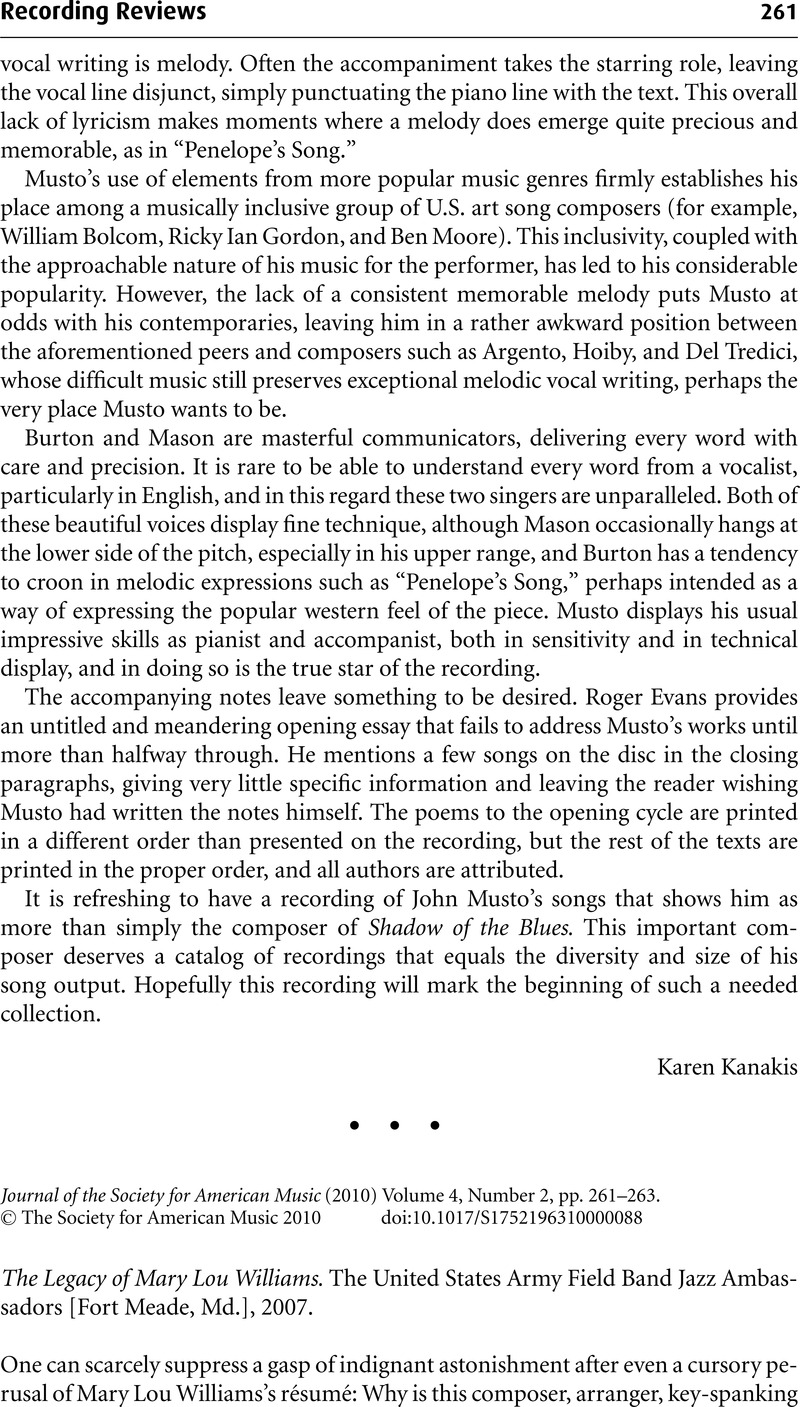No CrossRef data available.
Article contents
The Legacy of Mary Lou Williams. The United States Army Field Band Jazz Ambassadors [Fort Meade, Md.], 2007.
Published online by Cambridge University Press: 15 April 2010
Abstract

- Type
- Recording Reviews
- Information
- Copyright
- Copyright © The Society for American Music 2010
References
1 Mary Lou Williams and Cecil Taylor, Embraced (Pablo, 2620–108, 1977).
2 See, for instance, Marian McPartland, Plays the Music of Mary Lou Williams (Concord Jazz 4605, 1994); Dave Douglas, Soul on Soul: A Celebration of Mary Lou Williams (RCA Victor 63603, 2000); and the Mary Lou Williams Collective, Zodiac Suite Revisited (Mary 1, 2006).
3 Louis Armstrong, Ambassador Satch (Columbia C840, 1956; reissued on Columbia/Legacy 88697492022, 2009); and Louis Armstrong; Dave Brubeck; Lambert, Hendricks, and Ross; and Carmen McRae, The Real Ambassadors (Columbia 5850, 1962; reissued on Columbia/Legacy: 57663, 1994). von Eschen, Penny, Satchmo Blows Up the World: Jazz Ambassadors Play the Cold War (Cambridge, Mass.: Harvard University Press, 2004)Google Scholar provides the first full-length historical treatment of this complex story. See also Monson, Ingrid, Freedom Sounds: Civil Rights Call Out to Jazz and Africa (Oxford: Oxford University Press, 2007), ch. 4CrossRefGoogle Scholar; and Atkins, E. Taylor, ed., Jazz Planet (Jackson: University Press of Mississippi, 2003), xvii–xvixGoogle Scholar.
4 Tucker, Sherrie, Swing Shift: “All-Girl” Bands of the 1940s (Durham, N.C.: Duke University Press, 2001), 20Google Scholar.


